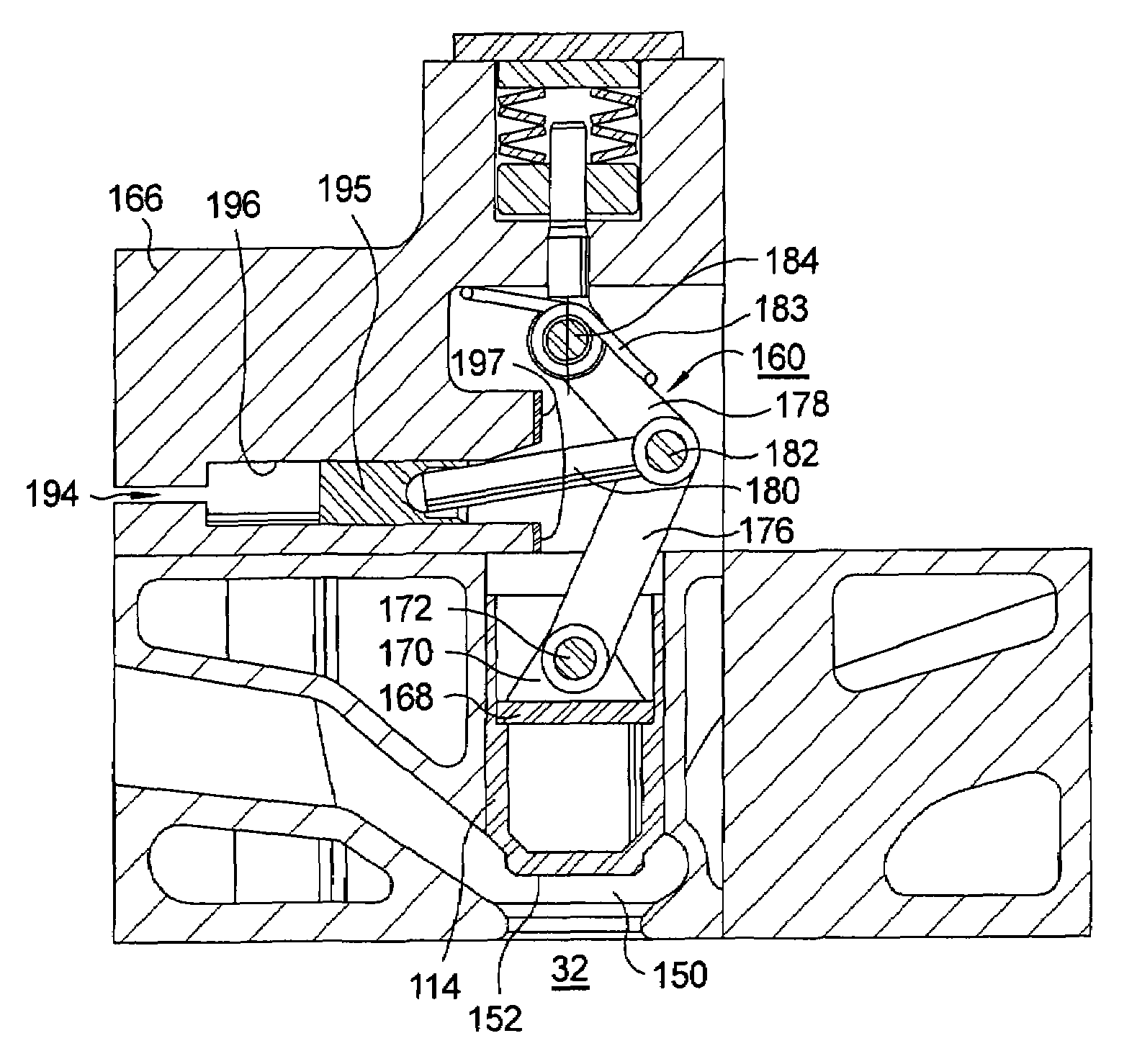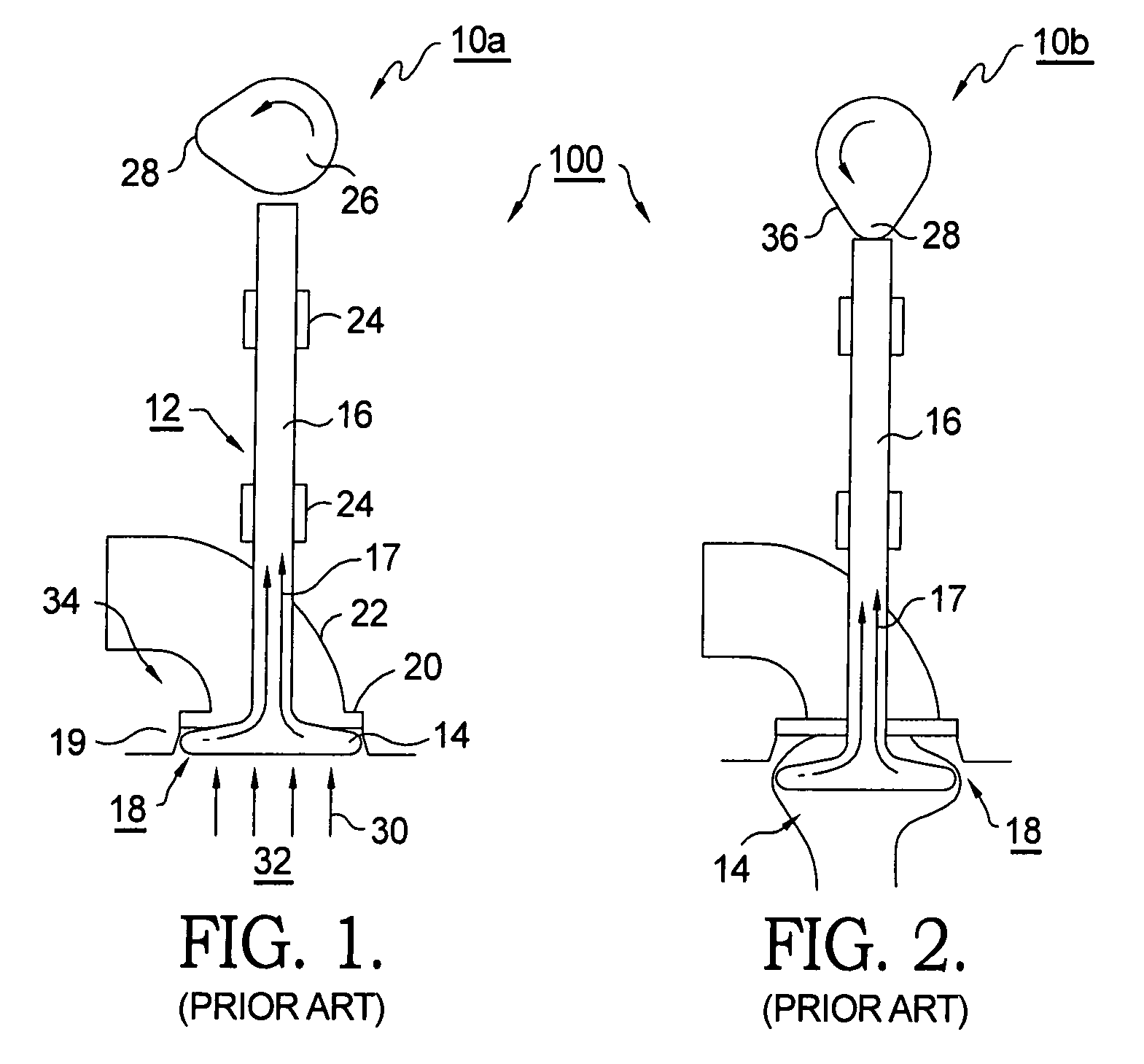Outward-opening gas-exchange valve system for an internal combustion engine
a gas exchange valve and internal combustion engine technology, applied in the field of internal combustion engines, can solve the problems of limiting potential, serious derangement of the cylinder and possibly the engine as a whole, and achieve the effect of high mechanical advantag
- Summary
- Abstract
- Description
- Claims
- Application Information
AI Technical Summary
Benefits of technology
Problems solved by technology
Method used
Image
Examples
Embodiment Construction
[0059]The present invention is directed to an outward-opening valve and its actuating mechanism; that is to say, a valve that opens by moving away from the combustion chamber. The concept of OO valves for internal combustion engines is not new, and some recent prior art examples can be found (see, for example, U.S. Pat. Nos. 5,522,358 and 5,709,178), notably the latter to which the present invention disclosure has some superficial similarity. Prior art OO valvetrains are, however, relatively complex, having been designed with heavy-duty engines in mind, and a lower cost concept would be more likely to be considered for production, particularly for light and medium-duty engines, this being an objective of the present invention. The present invention may be applied to all gas exchange valves, either inlet or exhaust (including stand-alone EGR valves) as may be desired.
[0060]The benefits and advantages of OO valves in accordance with the invention may be better understood and appreciat...
PUM
 Login to View More
Login to View More Abstract
Description
Claims
Application Information
 Login to View More
Login to View More - R&D
- Intellectual Property
- Life Sciences
- Materials
- Tech Scout
- Unparalleled Data Quality
- Higher Quality Content
- 60% Fewer Hallucinations
Browse by: Latest US Patents, China's latest patents, Technical Efficacy Thesaurus, Application Domain, Technology Topic, Popular Technical Reports.
© 2025 PatSnap. All rights reserved.Legal|Privacy policy|Modern Slavery Act Transparency Statement|Sitemap|About US| Contact US: help@patsnap.com



